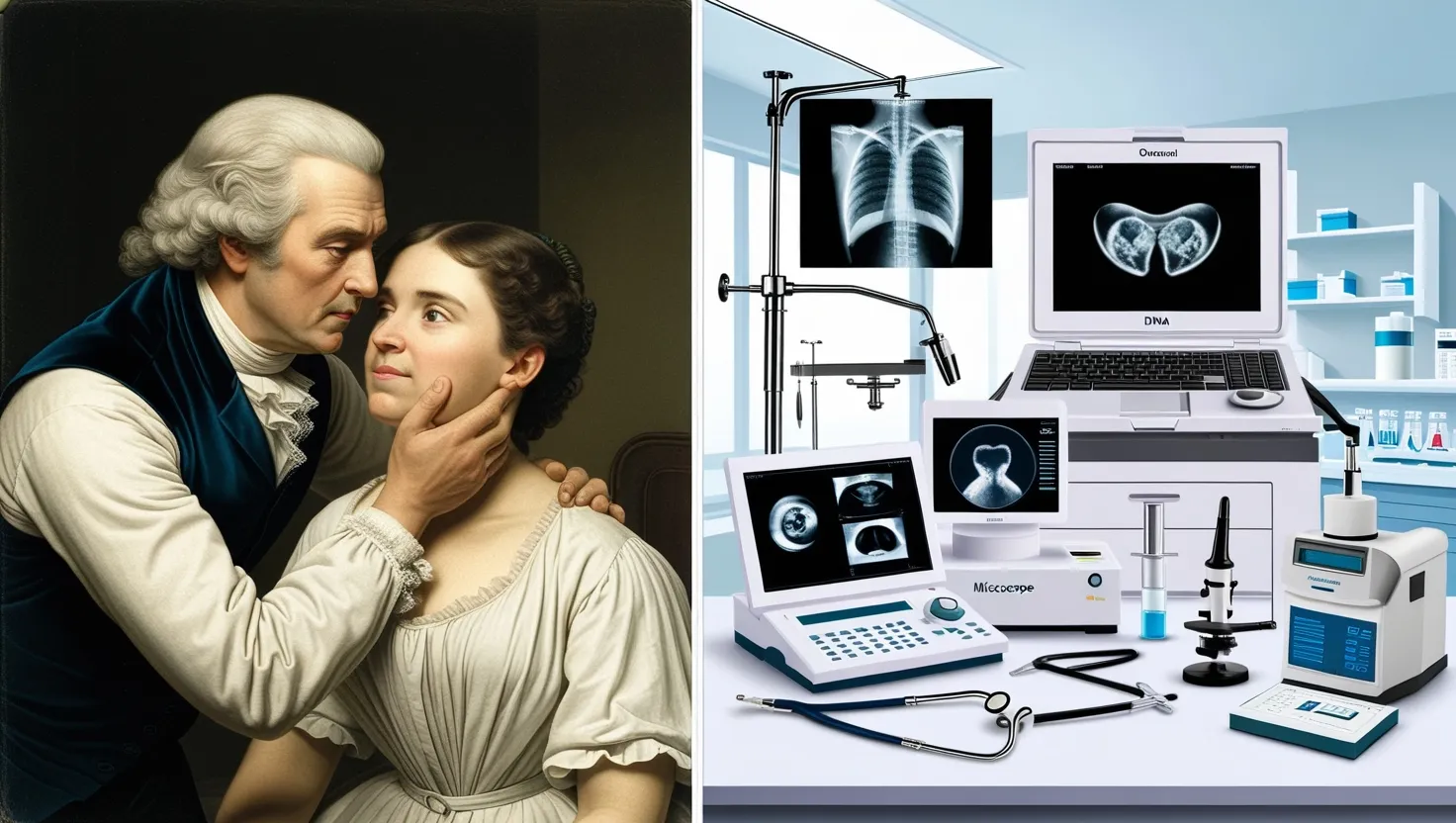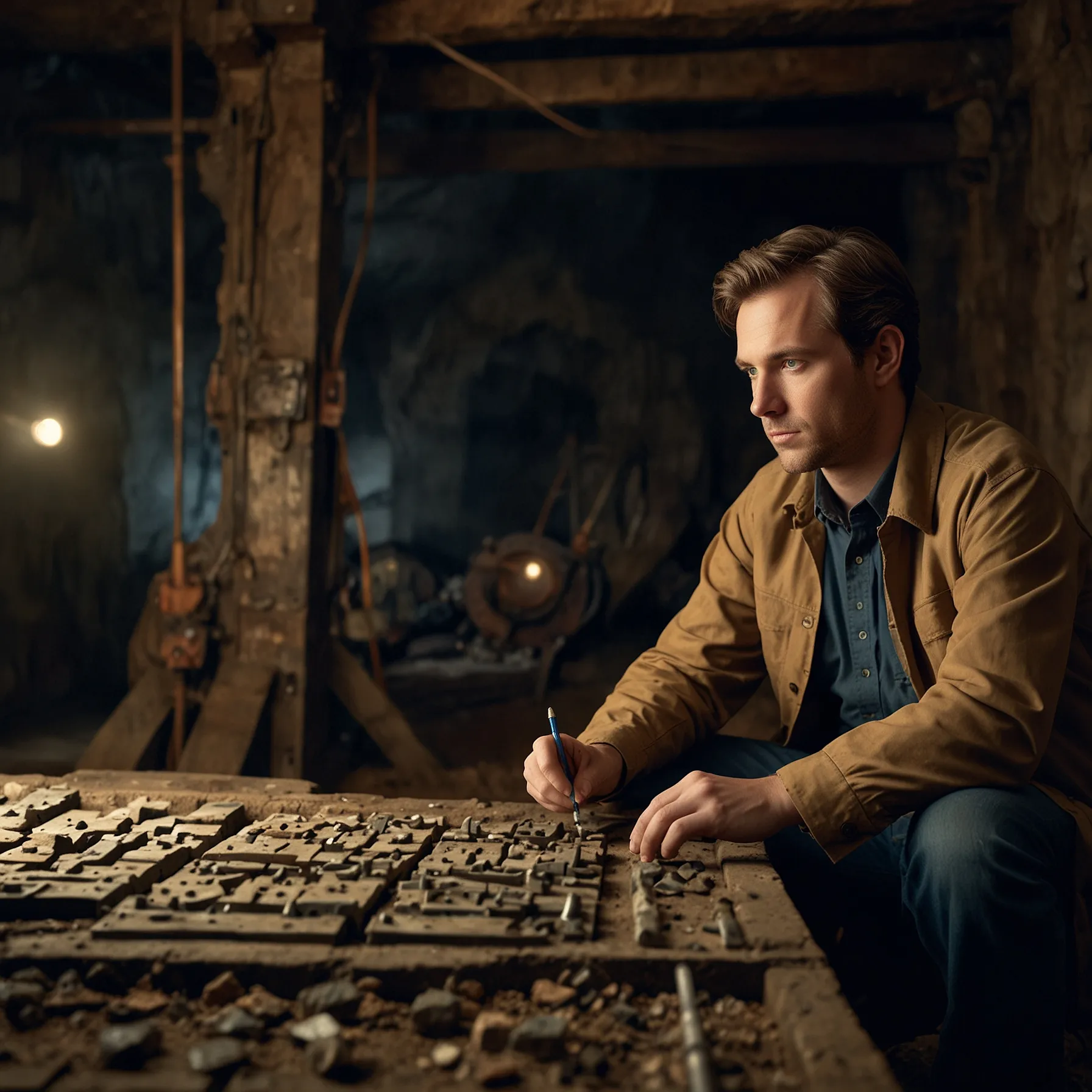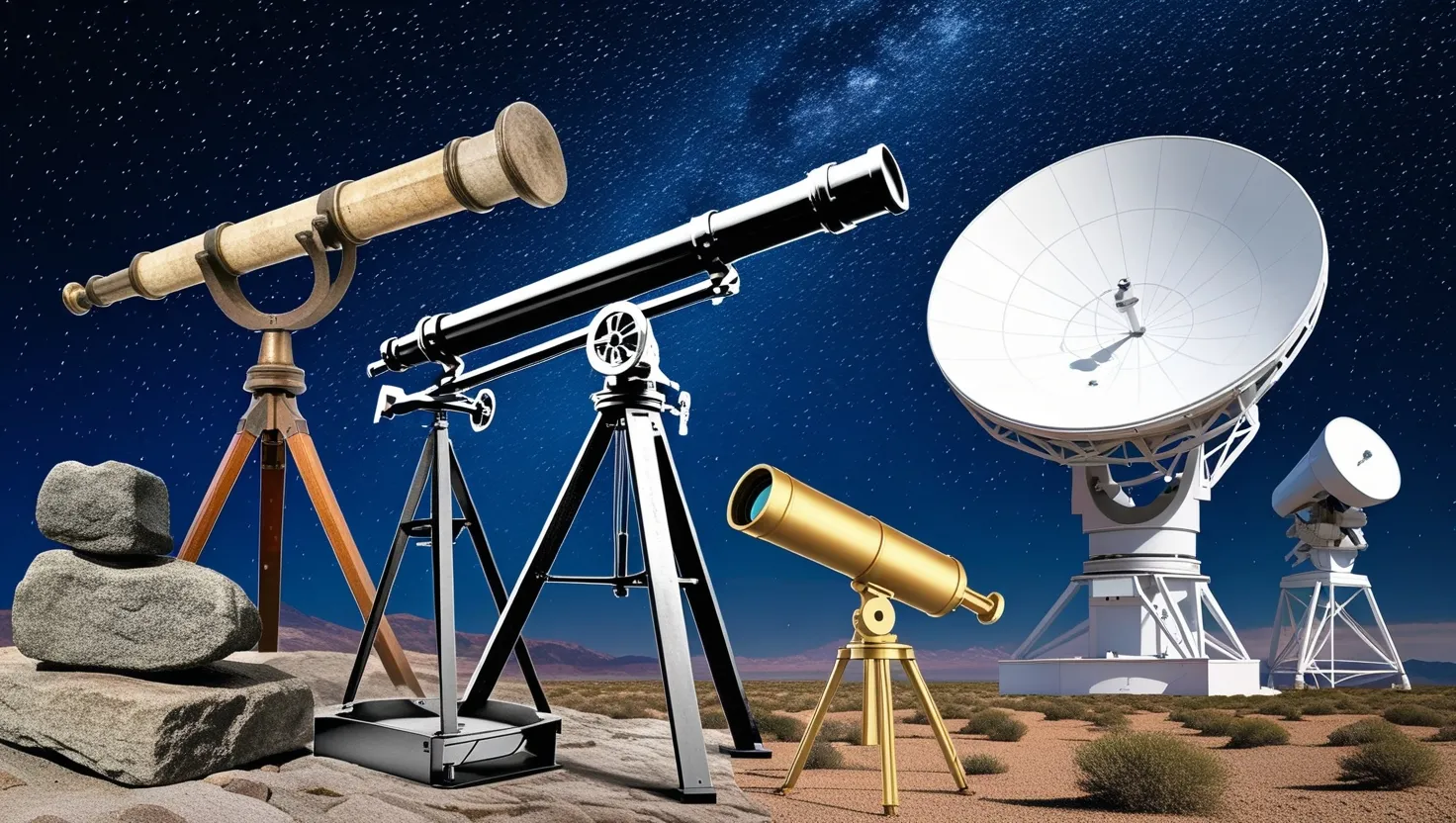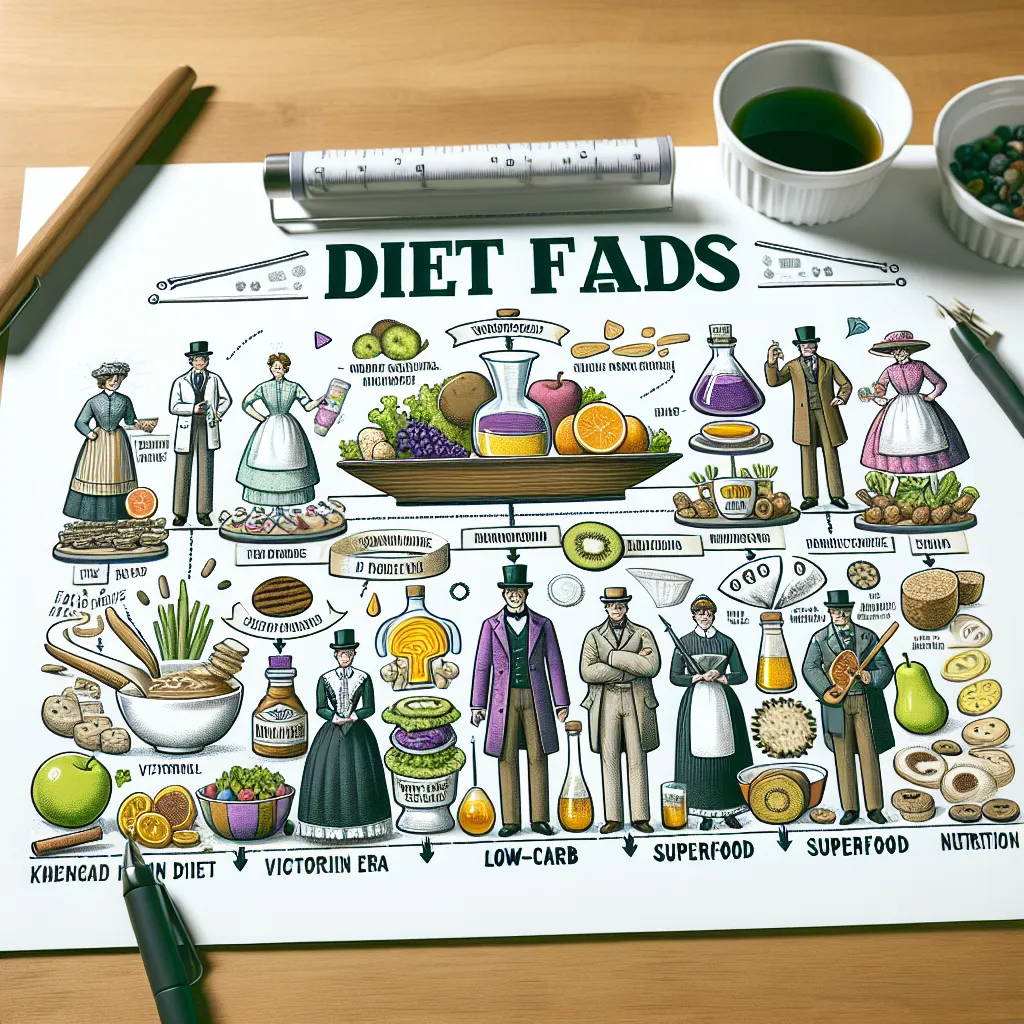Imagine being a physician in the early 1800s, forced to press your ear against someone’s chest just to guess what might be wrong. The art of diagnosis then often felt like educated guesswork, shaped by visible symptoms, patient complaints, and a generous dose of intuition. Today, diagnosis stands as a precise science, guided by objective measurement and extraordinary technology. How did we make this leap? The answer lies in a surprisingly small set of tools and insights—each transformative, each changing the rules of medicine forever.
Let’s start with something so basic it almost seems quaint: the stethoscope. In 1816, René Laennec’s simple invention sparked a quiet shift inside the physician’s toolkit. The humble tube, born from a blend of social awkwardness and scientific curiosity, let doctors literally listen in on the hidden stories of the body. Suddenly, the rattle of pneumonia or the whoosh of a faulty heart valve could be detected long before a patient looked gravely ill. Medicine moved from reacting to visible crisis to catching threats early, sometimes before the patient had a clue anything was wrong. It’s odd to think that people objected at first, claiming the device was too abstract and impersonal compared to the physician’s direct sense of hearing. Yet, as the saying goes, “The art of medicine consists in amusing the patient while nature cures the disease”—but the stethoscope taught us that art becomes science the moment it adds real information.
Now, ask yourself: how often do we take for granted that doctors can see inside us without a single cut or stitch? Until the late 19th century, the inside of a living body was a sealed box. Then Wilhelm Röntgen stumbled onto X-rays, quite by accident, while fiddling with cathode tubes in his dimly-lit lab. Take a moment to imagine the awe as the first ghostly shadow of a hand’s bones appeared on a fluorescent screen. Almost overnight, hospitals began installing X-ray equipment. Surgeons could find bullets; fractures became readable stories; tumors, previously hidden until too late, could be pinpointed and attacked. Before X-rays, exploratory surgery was often the only way to confirm a diagnosis. Their introduction forced doctors—and patients—to reconsider everything: the meaning of proof, the speed of intervention, and the very nature of medical truth.
“To study the phenomena of disease without books is to sail an uncharted sea, while to study books without patients is not to go to sea at all.” This quote from Sir William Osler reminds us that seeing is believing, but believing also depends on having something reliable to examine.
Of course, some breakthroughs saved lives in less spectacular, but equally revolutionary, ways. One of the strangest success stories began with a microscope, a dye, and a bit of patience. George Papanicolaou, investigating menstrual physiology, noticed abnormal cells in a sample. This accidental discovery seeded the Pap smear—a test that allowed detection of pre-cancerous and cancerous changes in the cervix years, even decades, before symptoms emerged. Before this, cervical cancer was usually a death sentence, discovered only after it had spread. The Pap test shifted the doctor’s position from crisis responder to cancer preventer. It wasn’t flashy; it needed convincing evidence to win over skeptics; but in the decades after widespread adoption, mortality rates for cervical cancer plummeted. If ever proof was needed that quiet work in the lab could outshine headline-making surgical feats, the Pap smear provided it.
Think about this: Are there other diseases waiting for their own “Pap moment”—a simple, early test that could tip the scales from late treatment to real prevention?
Then came the era of sound. After World War II, the same technology that found submarines under the waves found new life in the hospital. Ian Donald, a Scottish obstetrician, wondered if sonar might show not only the shape of a baby but actual disease in living tissue. The results were startling: a pulse of sound could distinguish a benign ovarian cyst from a deadly cancer, or show the developing chambers of a baby’s heart in the womb. No rays, no needles, just sound and echo. This move from static imagery to real-time, moving pictures added a new dimension—doctors could now watch physiology in action, not just capture snapshots frozen in time. Ultrasound didn’t stop at babies. It now guides tumors out of hiding, pinpoints blood clots, and even maps out strokes before they do their worst damage. It’s hard to overstate how gentle and powerful it is to “see” inside without ever breaking the skin.
It’s here that I wonder: How many stories, from anxious parents reassured by a first glimpse to elderly patients avoiding risky exploratory surgery, owe their quiet relief to this invisible wave of progress?
The most dramatic leap, however, wasn’t visual or auditory. It happened in molecules—in a world even microscopes couldn’t touch. Kary Mullis, a biochemist given to unconventional thinking, realized late one night in the early 1980s that a simple chemical dance could amplify DNA a billion-fold. His idea, the polymerase chain reaction (PCR), was met with skepticism, then explosive adoption. This single technique meant that diseases could be identified from the tiniest scraps—a fleck of dried blood, a swab from a cheek, or even traces left at an ancient burial site. Suddenly, diagnosing genetic disorders, tracking down infections at their earliest stages, and even matching criminal evidence became possible. When the world faced novel threats, like the emergence of HIV and later the rapid outbreaks of new viruses, PCR moved from an academic curiosity to an indispensable tool. It stripped away layers of uncertainty, making the invisible visible, the rare common, and the once-impossible routine.
The irony, of course, is that the journey from guesswork to certainty hasn’t erased uncertainty from medicine. If anything, it’s given us a new vocabulary for doubt—sensitivities, specificities, false positives, and the subtle differences between what can be found and what should actually matter for each person. The stethoscope, X-ray, Pap smear, ultrasound, and PCR do not replace judgment. Instead, they add layers of understanding that let us act sooner, treat more precisely, and sometimes—though not always—avoid harm.
Just reflect for a moment: which old practices do we still trust just because they are traditional? Which modern miracles, so ordinary we barely notice them, might vanish if we stopped investing in careful, curious observation and patient-driven insight?
The conversation medicine has with itself—and with patients—forever changed with each diagnostic leap. Before the stethoscope, illness was judged by symptoms, often alarmingly late. Before X-rays, we fumbled in darkness, guessing at what hands and minds could not touch. The Pap smear turned the microscope from a tool for discovering disease into a weapon for preventing it. Ultrasound let us peer into the living body in motion, teaching humility before the complex choreography of life. PCR let us read our biological script, often before a single symptom emerged, rewriting what it means to predict, diagnose, and personalize care.
Consider this line from Hippocrates: “It is more important to know what sort of person has a disease than to know what sort of disease a person has.” Each diagnostic breakthrough, in its own way, let doctors focus on individual realities, on finding out what was true for one patient at one moment—while freeing us, step by step, from the tyranny of averages and the blindness of guesswork.
But progress doesn’t run in a straight line. Each step forward also reveals new challenges: Can we make these miracles available to everyone and not just a privileged few? Does our growing technical power risk making care colder, or will it enable more humane, tailored medicine? Are we, in our chase for precision, at risk of over-interpreting normal variations and calling health a disease?
Great diagnostics have always been about curiosity and care—the willingness to listen to the body not just as a puzzle to be solved, but as a narrative to be understood. Each era’s innovation carried with it not only new answers, but also fresh questions: What are we missing? What will we see tomorrow that today we can’t even imagine?
So I invite you to pause and wonder: where will the next revolution come from? Could it be drawn from the same places that gave us the gift of hearing, seeing, screening, scanning, and decoding? Or does it wait in the margins of our current thinking, in the overlooked, the unasked, the as-yet invisible?
Medicine’s greatest breakthroughs often come not from dispensing with the past, but by seeing it with new eyes—and new tools—in the hope that, just maybe, the guesswork can one day become precision for all who seek healing.






